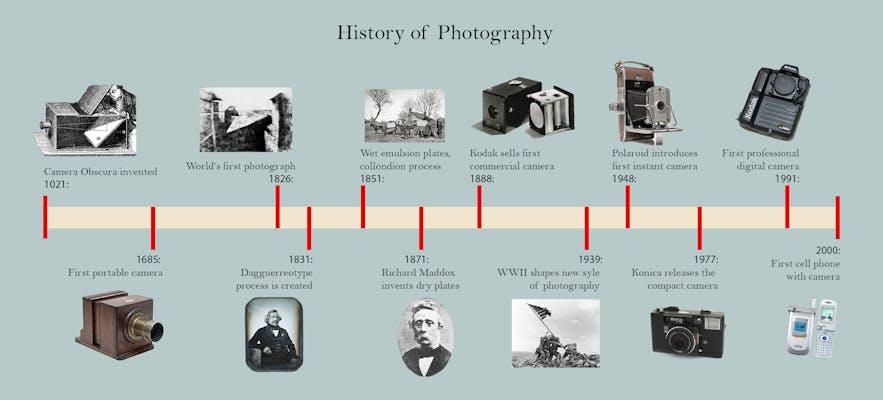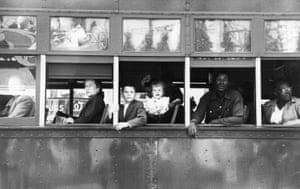
From the first photo being taken 195 years ago, things have come a long way since then.
The first camera ever invented was called the Camera Obscura. It was developed by an Iraqi scientist in the early 11th century. It took 600 years for the Camera Obscura to become portable as it was so large.
The first permanent images were taken in the late 1830s, when Frenchman Joseph Nicéphore Niépce used a portable Camera Obscura to expose a pewter plate coated with bitumen to light. His success led to many more experiments being conducted and caused a rapid leap forward in styles of photography.
In the 1880s, when photography was still strictly for professionals and the very wealthy, a man called George Eastman started a company called Kodak. It would be this company that would be responsible for the invention of the Kodak Brownie, the first commercially available camera. Pictures would be taken by the consumer, then when all the film had been used it would be sent back to the factory where the film would be developed and printouts would be made. This is a very similar method to today’s disposable cameras.
World War II was revolutionary for photography. Photos were taken of soldiers in combat and the aftermath of the events. These were publicly displayed for everyone to see. It brought the reality of war to the public eye and shaped the face of photography to the present day.
About a decade after the war ended, instant images began to increase in popularity. This was because a new camera called the Model 95 from Polaroid had just been released. People could now take photos and have them developed inside the camera in under a minute. It was fairly expensive at launch but over time more models were released, dropping the prices so that almost all of the population could afford it. However, in 2008, Polaroid ceased production of all products and closed its doors, taking its secrets with it. The quality of a Polaroid is still difficult to replicate to this day.
Smart cameras began to appear with the first SLR cameras during the 1950s. Nikon began with the Model F and a Japanese company called Ashai (later known as Pentax) introduced the Ashaiflex. The SLR remained the camera of choice for 30 years. After this, compact cameras began to become more prominent. Nicknamed “point and shoot” cameras could now calculate shutter speed, aperture and focus, allowing the photographer to concentrate on composition.
New companies began to emerge, including Canon and previously mentioned, Pentax. DSLRs were now the preferred option for a professional. Cameras now began to shrink, small enough to now have three or more of them on the back of a smartphone, retaining the ability to take an incredibly high-quality photograph.






